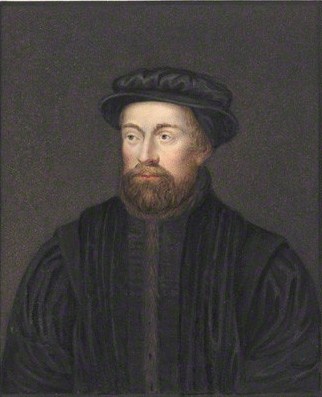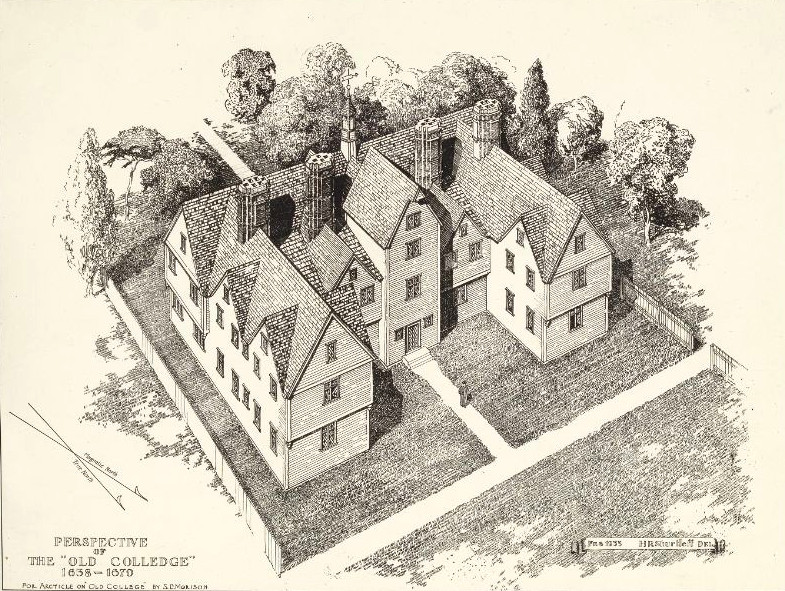|
St Dunstan's Church, Cranbrook
St Dunstan's Church, also known as the Cathedral of the Weald, in Cranbrook, Kent, England, dates to the late 13th century. It is now Grade I listed. Its 74 feet-high tower, completed in 1425, has a wooden figure of Father Time and his scythe on the south face. It also contains the prototype for the Big Ben clock in London.Cranbrook A Wealden Town'', C.C.R. Pile (1955) Work started in the late 13th century, the chancel arch and porch are a century later, the nave and tower were added after 1500, and William Slater and Ewan Christian restored the building in 1863. It is administered by the Weald Deanery, part of the Archdeaconry of Maidstone, which is in turn one of three archdeaconries in the Diocese of Canterbury. Cranbrook native Comfort Starr, one of the founding members of Harvard College Harvard College is the undergraduate college of Harvard University, an Ivy League research university in Cambridge, Massachusetts. Founded in 1636, Harvard College is the origina ... [...More Info...] [...Related Items...] OR: [Wikipedia] [Google] [Baidu] |
Cranbrook, Kent
Cranbrook is a town in the civil parish of Cranbrook and Sissinghurst, in the Weald of Kent in South East England. It lies roughly half-way between Maidstone and Hastings, about southeast of central London. The smaller settlements of Sissinghurst, Swattenden, Colliers Green and Hartley lie within the civil parish. The population of the parish was 6,717 in 2011. History The place name Cranbrook derives from Old English ''cran bric'', meaning Crane Marsh, marshy ground frequented by cranes (although more probably herons). Spelling of the place name has evolved over the centuries from ''Cranebroca'' (c. 1100); by 1226 it was recorded as ''Cranebroc'', then Cranebrok. By 1610 the name had become Cranbrooke, which evolved into the current spelling. There is evidence of early activity here in the Roman period at the former Little Farningham Farm where a substantial iron working site was investigated in the 1950s,in 2000 the site was the subject of a Kent Archaeological Soci ... [...More Info...] [...Related Items...] OR: [Wikipedia] [Google] [Baidu] |
Church Of England
The Church of England (C of E) is the established Christian church in England and the mother church of the international Anglican Communion. It traces its history to the Christian church recorded as existing in the Roman province of Britain by the 3rd century and to the 6th-century Gregorian mission to Kent led by Augustine of Canterbury. The English church renounced papal authority in 1534 when Henry VIII failed to secure a papal annulment of his marriage to Catherine of Aragon. The English Reformation accelerated under Edward VI's regents, before a brief restoration of papal authority under Queen Mary I and King Philip. The Act of Supremacy 1558 renewed the breach, and the Elizabethan Settlement charted a course enabling the English church to describe itself as both Reformed and Catholic. In the earlier phase of the English Reformation there were both Roman Catholic martyrs and radical Protestant martyrs. The later phases saw the Penal Laws punish Ro ... [...More Info...] [...Related Items...] OR: [Wikipedia] [Google] [Baidu] |
Roman Catholic Church
The Catholic Church, also known as the Roman Catholic Church, is the largest Christian church, with 1.3 billion baptized Catholics worldwide . It is among the world's oldest and largest international institutions, and has played a prominent role in the history and development of Western civilization.O'Collins, p. v (preface). The church consists of 24 ''sui iuris'' churches, including the Latin Church and 23 Eastern Catholic Churches, which comprise almost 3,500 dioceses and eparchies located around the world. The pope, who is the bishop of Rome, is the chief pastor of the church. The bishopric of Rome, known as the Holy See, is the central governing authority of the church. The administrative body of the Holy See, the Roman Curia, has its principal offices in Vatican City, a small enclave of the Italian city of Rome, of which the pope is head of state. The core beliefs of Catholicism are found in the Nicene Creed. The Catholic Church teaches that it is th ... [...More Info...] [...Related Items...] OR: [Wikipedia] [Google] [Baidu] |
Grade I Listed
In the United Kingdom, a listed building or listed structure is one that has been placed on one of the four statutory lists maintained by Historic England in England, Historic Environment Scotland in Scotland, in Wales, and the Northern Ireland Environment Agency in Northern Ireland. The term has also been used in the Republic of Ireland, where buildings are protected under the Planning and Development Act 2000. The statutory term in Ireland is " protected structure". A listed building may not be demolished, extended, or altered without special permission from the local planning authority, which typically consults the relevant central government agency, particularly for significant alterations to the more notable listed buildings. In England and Wales, a national amenity society must be notified of any work to a listed building which involves any element of demolition. Exemption from secular listed building control is provided for some buildings in current use for worship, ... [...More Info...] [...Related Items...] OR: [Wikipedia] [Google] [Baidu] |
Father Time
Father Time is a personification of time. In recent centuries he is usually depicted as an elderly bearded man, sometimes with wings, dressed in a robe and carrying a scythe and an hourglass or other timekeeping device. As an image, "Father Time's origins are curious." The ancient Greeks themselves began to associate ''chronos'', their word for time, with the agricultural god Cronos, who had the attribute of a harvester's sickle. The Romans equated Cronos with Saturn, who also had a sickle, and was treated as an old man, often with a crutch. The wings and hourglass were early Renaissance additions and he eventually became a companion of the Grim Reaper, personification of Death, often taking his scythe. He may have as an attribute a snake with its tail in its mouth, an ancient Egyptian symbol of eternity. New Year Around New Year's Eve, the media (in particular editorial cartoons) use the convenient trope of Father Time as the personification of the previous year (or "th ... [...More Info...] [...Related Items...] OR: [Wikipedia] [Google] [Baidu] |
Scythe
A scythe ( ) is an agricultural hand tool for mowing grass or harvesting crops. It is historically used to cut down or reap edible grains, before the process of threshing. The scythe has been largely replaced by horse-drawn and then tractor machinery, but is still used in some areas of Europe and Asia. Reapers are bladed machines that automate the cutting of the scythe, and sometimes subsequent steps in preparing the grain or the straw or hay. The word "scythe" derives from Old English ''siðe''. In Middle English and later, it was usually spelt ''sithe'' or ''sythe''. However, in the 15th century some writers began to use the ''sc-'' spelling as they thought (wrongly) the word was related to the Latin ''scindere'' (meaning "to cut"). Nevertheless, the ''sithe'' spelling lingered and notably appears in Noah Webster's dictionaries. A scythe consists of a shaft about long called a ''snaith'', ''snath'', ''snathe'' or ''sned'', traditionally made of wood but now sometimes me ... [...More Info...] [...Related Items...] OR: [Wikipedia] [Google] [Baidu] |
Big Ben
Big Ben is the nickname for the Great Bell of the Great Clock of Westminster, at the north end of the Palace of Westminster in London, England, and the name is frequently extended to refer also to the clock and the clock tower. The official name of the tower in which Big Ben is located was originally the Clock Tower, but it was renamed Elizabeth Tower in 2012 to mark the Diamond Jubilee of Elizabeth II. The tower was designed by Augustus Pugin in a neo-Gothic style. When completed in 1859, its clock was the largest and most accurate four-faced striking and chiming clock in the world. The tower stands tall, and the climb from ground level to the belfry is 334 steps. Its base is square, measuring on each side. Dials of the clock are in diameter. All four nations of the UK are represented on the tower on shields featuring a rose for England, thistle for Scotland, shamrock for Ireland, and leek for Wales. On 31 May 2009, celebrations were held to mark the tower's 150th a ... [...More Info...] [...Related Items...] OR: [Wikipedia] [Google] [Baidu] |
William Slater (architect)
William Slater (1819 – 17 December 1872) was an English architect who was born in Northamptonshire and practised in London. He oversaw restoration of many churches, latterly in partnership with R. H. Carpenter. Career He joined Richard Cromwell Carpenter as his first pupil. For some years lived with the Carpenter family, and he became Carpenter's assistant. Slater left to establish an independent practice with another of Carpenter's pupils, William Smith (later Bassett-Smith). Carpenter died in 1855 at the age of 42, and Slater was persuaded to take over his practice. In 1857 Carpenter's son Richard Herbert Carpenter joined him as a pupil, and became a partner in 1863. Work Slater and Smith designed a parsonage and restored three churches. When R. C. Carpenter died he left uncompleted the rebuilding of the parish church of SS Simon and Jude, Earl Shilton, Leicestershire. Slater took over the work and completed it in 1856. In 1863 Slater and an architect called Gillet d ... [...More Info...] [...Related Items...] OR: [Wikipedia] [Google] [Baidu] |
Ewan Christian
Ewan Christian (1814–1895) was a British architect. He is most frequently noted for the restorations of Southwell Minster and Carlisle Cathedral, and the design of the National Portrait Gallery. He was Architect to the Ecclesiastical Commissioners from 1851 to 1895. Christian was elected A RIBA in 1840, FRIBA in 1850, RIBA President 1884–1886 and was awarded the Royal Gold Medal in 1887. Life National Portrait Gallery Ewan Christian is well-known for designing the National Portrait Gallery (1890–1895) in St Martin's Place, London, just north of Trafalgar Square. The building, faced in Portland stone, is not typical of his work and was built towards the end of his life, being completed shortly after his death. Christian was an unexpected and controversial choice for such a commission and was appointed by the donor for the new building, W. H. Alexander (1832–1905). In the autumn of 1889 the architect embarked on a study tour of continental museums and art galleries to p ... [...More Info...] [...Related Items...] OR: [Wikipedia] [Google] [Baidu] |
Diocese Of Canterbury
The Diocese of Canterbury is a Church of England diocese covering eastern Kent which was founded by St. Augustine of Canterbury in 597. The diocese is centred on Canterbury Cathedral and is the oldest see of the Church of England. The ''Report of the Commissioners appointed by his Majesty to inquire into the Ecclesiastical Revenues of England and Wales'' (1835) noted the net annual revenue for the Canterbury see was £19,182. This made it the wealthiest diocese in England. Bishops The diocesan bishop is the Archbishop of Canterbury, presently Justin Welby. However, because of his roles as metropolitan bishop of the Province of Canterbury, Primate of All England and "first bishop" of the worldwide Anglican Communion, the archbishop (whose primary residence is at Lambeth Palace in London) is often away from the diocese. Therefore, his suffragan bishop, the Bishop of Dover (presently Rose Hudson-Wilkin), is in many ways empowered to act almost as if she were the diocesan bishop. T ... [...More Info...] [...Related Items...] OR: [Wikipedia] [Google] [Baidu] |
Comfort Starr
Comfort Starr (6 July 1589 – 2 January 1659) was a 17th-century English physician who emigrated to the Thirteen Colonies. He was one of the five founders of Harvard College. Early life Starr was born in Cranbrook, Kent, on 6 July 1589. He was one of the seventeen children of Thomas Starr.Comfort Starr – Family Search Emigration In 1635, aged 45, Starr left the aboard the ''Hercules'', which launched from . He settled in |
Harvard College
Harvard College is the undergraduate college of Harvard University, an Ivy League research university in Cambridge, Massachusetts. Founded in 1636, Harvard College is the original school of Harvard University, the oldest institution of higher learning in the United States and among the most prestigious in the world. Part of the Faculty of Arts and Sciences, Harvard College is Harvard University's traditional undergraduate program, offering AB and SB degrees. It is highly selective, with fewer than five percent of applicants being offered admission in recent years. Harvard College students participate in more than 450 extracurricular organizations and nearly all live on campus—first-year students in or near Harvard Yard, and upperclass students in community-oriented "houses". History The school came into existence in 1636 by vote of the Great and General Court of the Massachusetts Bay Colony—though without a single building, instructor, or student. In 1638, the colleg ... [...More Info...] [...Related Items...] OR: [Wikipedia] [Google] [Baidu] |


.jpg)





